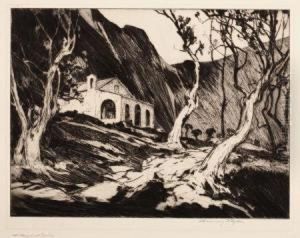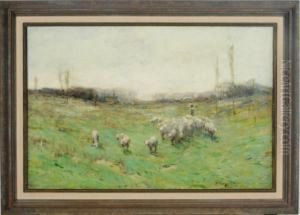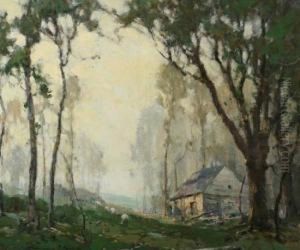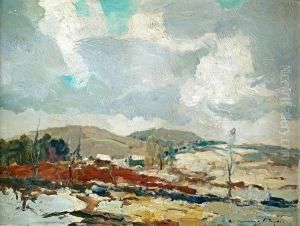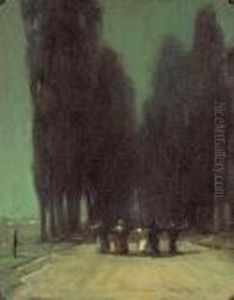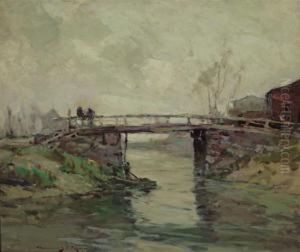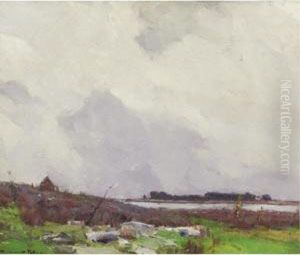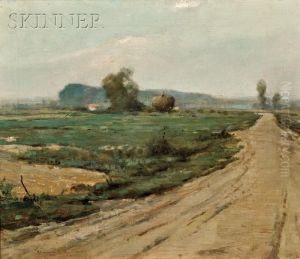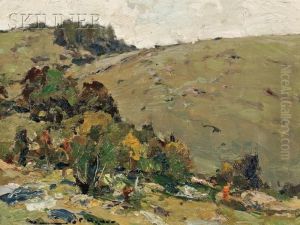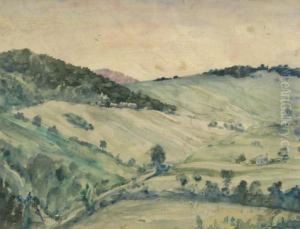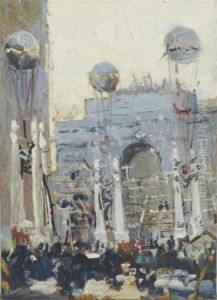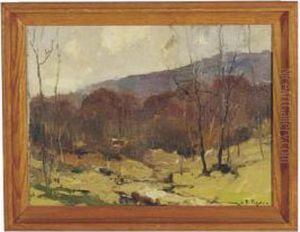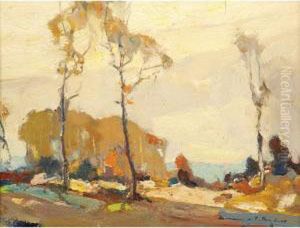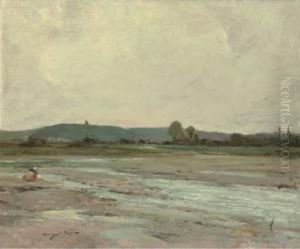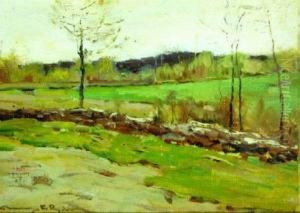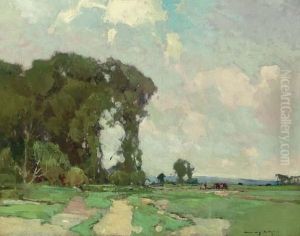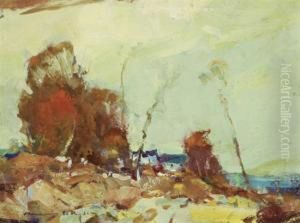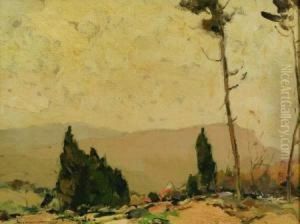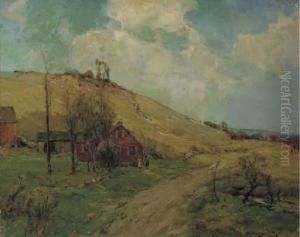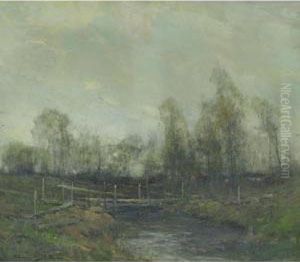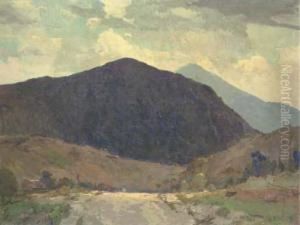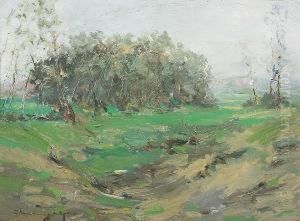Chauncey Foster Ryder Paintings
Chauncey Foster Ryder was an American artist born on March 22, 1868, in Danbury, Connecticut. He is best known for his landscape paintings. Ryder began his formal art education at the Art Institute of Chicago in the late 1880s and later moved to New York City, where he continued his studies at the Art Students League.
In 1901, Ryder traveled to France to further hone his artistic skills. He studied at the Académie Julian in Paris under the tutelage of prominent artists such as Jean-Paul Laurens and Raphael Collin. During his time in Europe, Ryder was heavily influenced by the Barbizon school and the Impressionist movement, both of which are evident in the soft brushwork and serene mood of his landscapes.
Returning to the United States in 1907, Ryder settled in New York and became an active member of the art community. His work was widely exhibited, and he was associated with several art organizations, including the National Academy of Design, where he was elected an Associate in 1911 and a full Academician in 1914.
Ryder's paintings often depict the rural landscapes of New England and the Hudson River Valley, characterized by their subtle tonal variations and serene depiction of nature. He was adept at capturing the atmospheric effects of different seasons and times of day, contributing to the tranquil and meditative quality of his work.
Throughout his career, Ryder received numerous awards and honors, including gold medals from the Pennsylvania Academy of the Fine Arts and the Art Institute of Chicago. His work is represented in major museums across the United States, such as the Smithsonian American Art Museum in Washington, D.C., and the Metropolitan Museum of Art in New York.
Chauncey Foster Ryder passed away on February 28, 1949, in Wilton, New Hampshire. His legacy as a prominent American landscape painter continues to be celebrated, and his works remain an important part of the American art historical canon.



